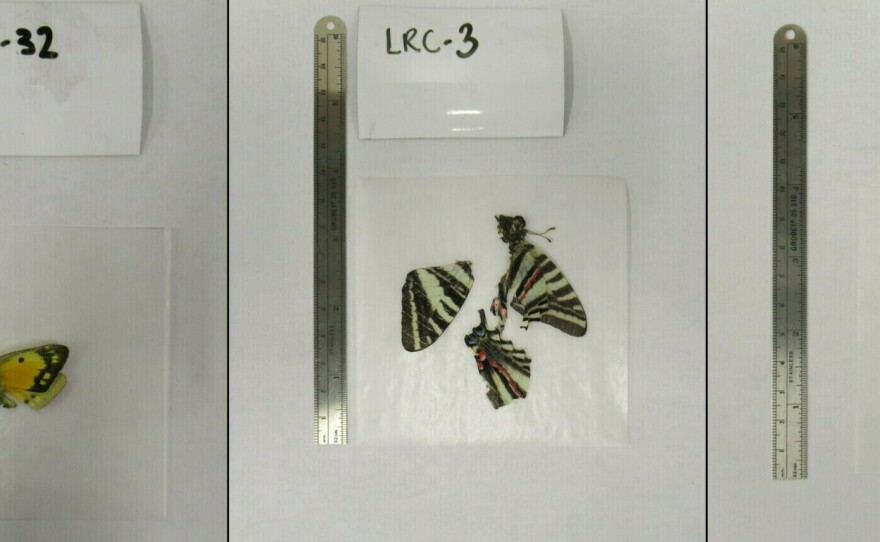Have you seen any dead butterflies lately?
If so, the U.S. Geological Survey wants you to mail them their way, along with deceased moths and skippers. The agency is collecting specimens from six states — Alabama, Georgia, Kansas, Nebraska, Oklahoma and Texas — to test if contaminants are leading to declining insect populations.
"There are some questions that can't effectively be answered without help from a lot of people. It's what makes citizen science so special and valuable," Julie Dietze, the USGS scientist in charge of the project, said in a press release. "Collections like this one are important because they have the potential to provide scientists now, and 20 years from now, access to specimens."
The states were chosen because they either are on the migration path of monarch butterflies, are in the Corn Belt where pesticides are heavily used or have a large presence of industrial farms that raise animals for consumption.
To send in an insect, it must be larger than two inches wide and not be listed as a protected, endangered or threatened species under state or federal law. (Within the six states in the pilot program, the Mitchell's satyr butterfly is currently the only protected species and it's found in Alabama.)
The insect should be placed in a resealable plastic bag, put in a sealed envelope and mailed via USPS or delivered in person to: USGS LRC, 1217 Biltmore Drive, Lawrence, KS 66049. Freeze the dead insects if you can't ship them within three days.
It is acceptable to send in damaged insects.
The pilot program began in April and will continue until Nov. 1, but "based on the response and number of specimens received so far, the collection efforts may continue beyond November into 2024," USGS said.
The specimens will be made available to all USGS scientists for research. Dietze said she hopes the pilot is successful enough to expand to other states and include other kinds of insects.
She also urges the program to be used within K-12 schools.
"I think community science projects like this one can be really impactful for just teaching students about science and how they can help, and other opportunities within USGS," she said.
Insect populations are on the decline
The insect world at large has been threatened over the years by climate change, habitat loss and pesticide use.
The easily recognizable black-and-orange monarch butterflies were listed as endangered last year by the International Union for Conservation of Nature, putting them two categories away from extinction.
Scientists estimate that their numbers have dropped between 22% and 72% in the last decade.
A 2019 study published in Biological Conservation estimated that 40% of the world's insect species could be extinct in the next few decades.
Insects, while they may be considered pests by many, serve an important function to the environment — they break down waste materials, pollinate foods and are prey to larger animals.
Copyright 2023 NPR. To see more, visit https://www.npr.org. 9(MDAzMjM2NDYzMDEyMzc1Njk5NjAxNzY3OQ001))






